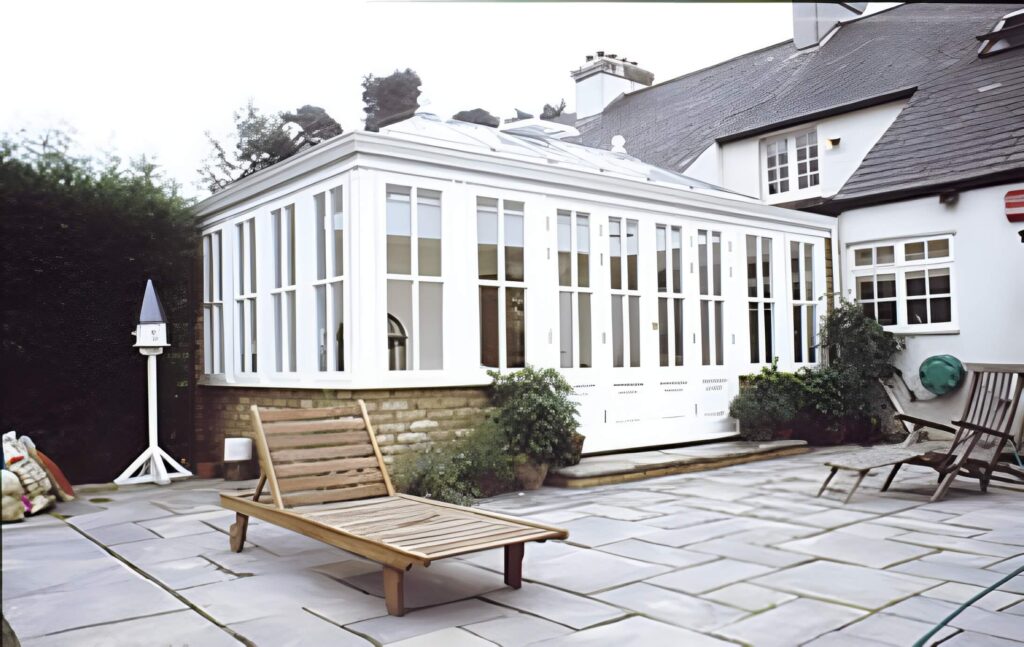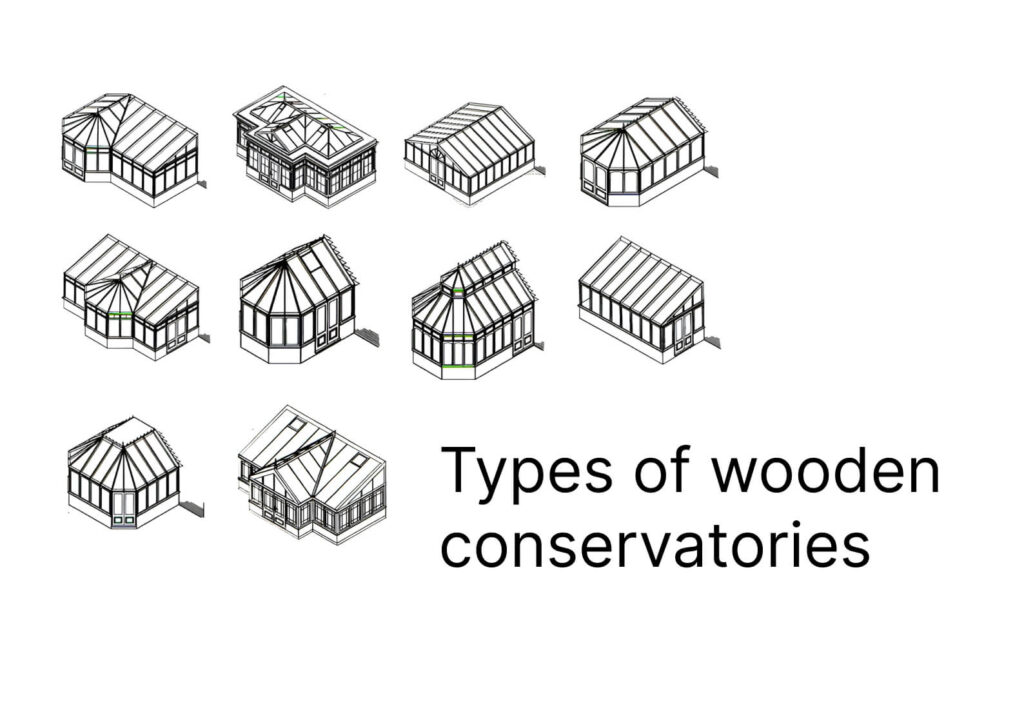Is your wooden conservatory feeling a bit too chilly in winter or unbearably hot in summer? You’re not alone — conservatories are known for being tricky to regulate. But the good news is, with the right insulation, you can turn yours into a space you love all year round.
Whether you go for professional wooden conservatory insulation service or roll up your sleeves with some DIY, there are plenty of options to improve comfort and save on energy bills. Let’s dive into what works best for wooden conservatory insulation.
Conservatory roof insulation solutions for maximum thermal efficiency
If you’re serious about improving your conservatory’s thermal efficiency, the roof is the best place to start. After all, it’s the primary source of heat escaping during winter and excessive warmth accumulating in summer. Here are some professional solutions to consider:
- Insulated roof panels: These panels are a fantastic way to add a thermal barrier. Professionals fit them seamlessly into your existing roof, ensuring the panels are installed correctly for better insulation. The result? A space that feels just right, no matter the season.
- Multifoil and rigid board insulation: These materials are installed between the roof’s battens, giving you even, reliable coverage. It’s the kind of job best left to the experts since it needs precise fitting to prevent gaps where heat can escape.
- Solid roof systems: If your conservatory has a glass roof and feels more like a greenhouse in summer, a solid roof conversion might be your answer. It’s a more involved option, but it adds excellent insulation and even reduces noise from outside.
- Polycarbonate roof systems: Polycarbonate is a lighter, modern material that reflects heat while keeping the space bright. When professionally installed, it balances the temperature inside, making your conservatory much more enjoyable year-round.
Glazing upgrades for enhanced insulation and comfort
Upgrading glazing is another professional service that can vastly improve insulation in wooden conservatories:
- Double and triple glazing: Replacing single-glazed windows with double or triple glazing is an effective way to increase thermal efficiency. These glazing systems often use an inert gas like argon between the glass layers for improved insulation. This design helps reduce heat loss in winter and limits heat build-up during warmer months, creating a more comfortable environment indoors.
- Low-E glass and reflective foil coatings: Low-E glass, or low-emissivity glass, is equipped with a reflective coating designed to redirect solar energy. Professional installers can recommend Low-E glass or apply reflective foil coatings to existing windows. These solutions maintain a cooler conservatory during summer while preserving natural light.
- Thermal film for extra efficiency: Thermal window films can be professionally applied to existing glazing to further insulate and control solar energy. This solution is ideal for conservatories with expansive glazing, helping to lower heating and cooling expenses while keeping the space bright and welcoming.
Conservatory ceiling and wall insulation techniques
Wall and ceiling insulation provide full thermal coverage, making a noticeable difference in comfort and energy efficiency. Here’s how professional services tackle these areas:
- Internal roof and wall insulation: Materials like thermal wadding insulation and insulation boards create a thermal barrier within the walls and ceiling. Plaster boarding can be applied over insulation layers, giving a neat finish that adds style and keeps conservatory warm.
- Vapour control layers: To prevent moisture problems, insulation professionals install vapour control layers to reduce condensation risks. This layer safeguards the wooden structure from moisture damage, prolonging the life of the insulation and preserving the integrity of the conservatory.
- Custom solutions for timber frames: Wooden conservatories have unique requirements due to the natural properties of timber, which expands and contracts with changes in temperature and humidity. Flexible insulation materials, such as thermal wadding or multifoil insulation, are ideal as they adapt to the timber’s movements without causing gaps or structural issues.
- In some cases, additional timber battens may be needed to support the weight of the insulation, particularly in the roof, ensuring both safety and longevity. Insulation can be integrated seamlessly into the structure, maintaining the original charm of the timber while improving thermal efficiency.
Floor insulation for comfortable, energy-efficient spaces
Floor insulation is a key yet often forgotten component in making your conservatory both warm and energy-efficient:
- Underfloor insulation boards: Insulation boards placed beneath the flooring prevent heat from escaping and create a warm surface during colder months. This layer also blocks cold air from entering, improving energy efficiency.
- Reflective foil and multifoil layers: Reflective foil or multifoil layers can be added beneath the floor. They reflect heat back into the room, cutting down on artificial heating requirements and energy usage.
- Tailored installation for flooring type: The type of insulation depends on the flooring material. Rigid insulation boards work well under wood or tiles, while thermal carpet underlay is ideal for carpets. Reflective foil insulation works well with most flooring types, directing heat back into the space. For laminate or tiled floors, foam underlays with reflective layers provide added warmth and efficiency.
Risks and considerations for professional conservatory insulation
Professional insulation offers many benefits, but certain risks and considerations come with the installation. Experienced installers are equipped to manage these risks:
- Drilling into glazing bars: Professional installers avoid unnecessary drilling into glazing bars to protect the structure’s integrity. Misplaced drilling can weaken glazing bars, potentially causing structural issues or shortening the conservatory’s lifespan.
- Weight concerns with added insulation: Adding insulation materials, particularly on the roof, increases the conservatory’s weight load. Professionals calculate load capacity to ensure the structure can handle extra weight without compromising structural integrity.
- Fire safety: Insulation materials may become hazardous if improperly installed, posing potential fire risks. Professional insulation teams use fire-rated materials and follow strict installation protocols to ensure the conservatory remains safe.
- Planning permission: Certain insulation upgrades, such as solid roof systems or significant changes to the structure, may require planning permission. It’s important to check local regulations and secure approval if necessary, especially for listed buildings or properties in conservation areas.
Practical DIY insulation solutions for wooden conservatories
If professional installation isn’t an option, there are several DIY methods you can use to improve your conservatory’s thermal performance:
- Install thermal window film: Add thermal window film to your glazing to reduce heat loss in winter and prevent excessive heat build-up in summer. This is an affordable, straightforward solution.
- Add insulating curtains or blinds: Hang thermal blinds or insulated curtains to help trap heat in colder months and block sunlight in summer, keeping the conservatory at a more stable temperature.
- Lay rugs with thermal underlay: If underfloor insulation isn’t feasible, adding thick rugs with a thermal underlay can reduce cold drafts and add warmth underfoot.
- Seal draughts around windows and doors: Use weatherstripping or draught excluders to block gaps around conservatory windows and doors.
- Apply reflective foil to roof panels: For a quick, temporary solution, add reflective foil to roof panels or beneath polycarbonate sheets.
- Create an insulated ceiling: Install lightweight insulation panels or thermal quilts on the ceiling to help block heat transfer.
Conclusion
Whether you opt for professional services or tackle DIY insulation projects, improving the thermal performance of your wooden conservatory can make it a welcoming space in any season. From expertly installed roof and wall insulation to practical upgrades like thermal blinds and window films, there’s a solution for every need and budget.





